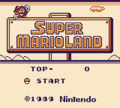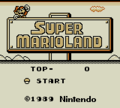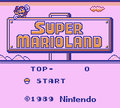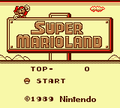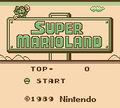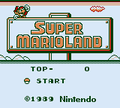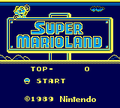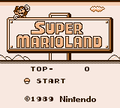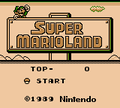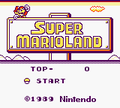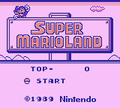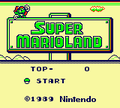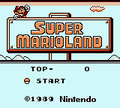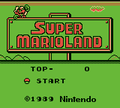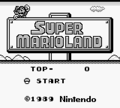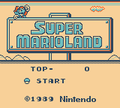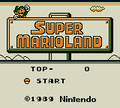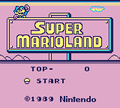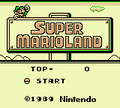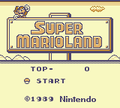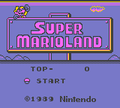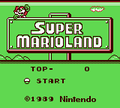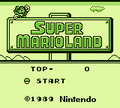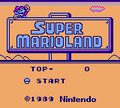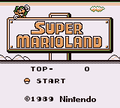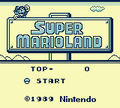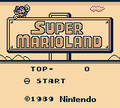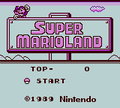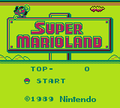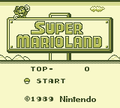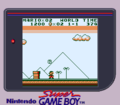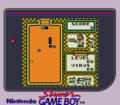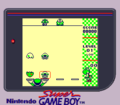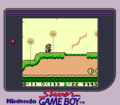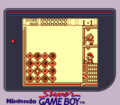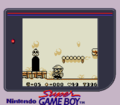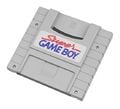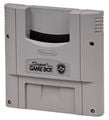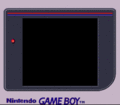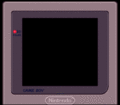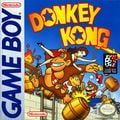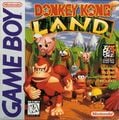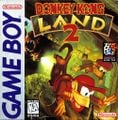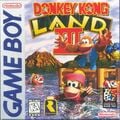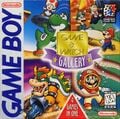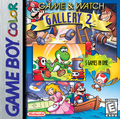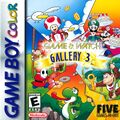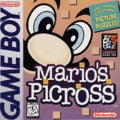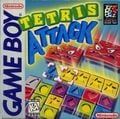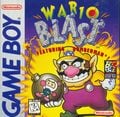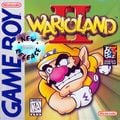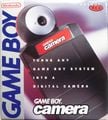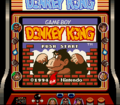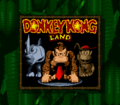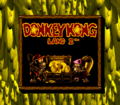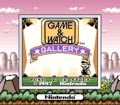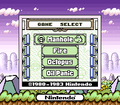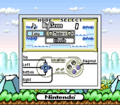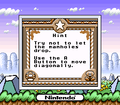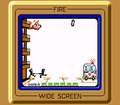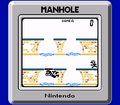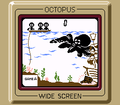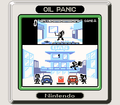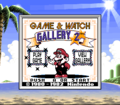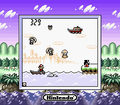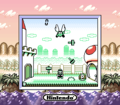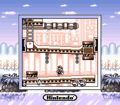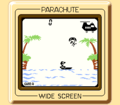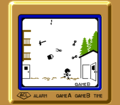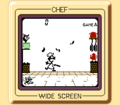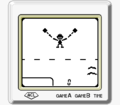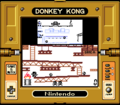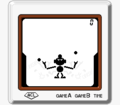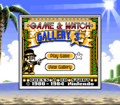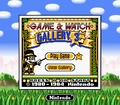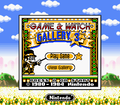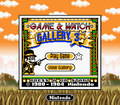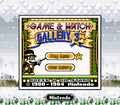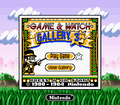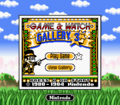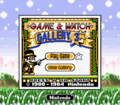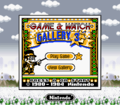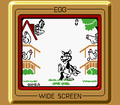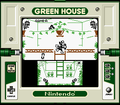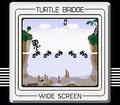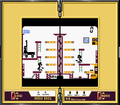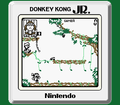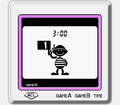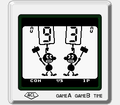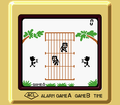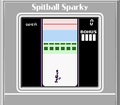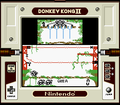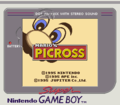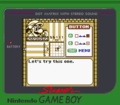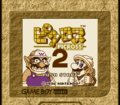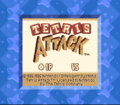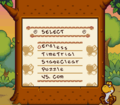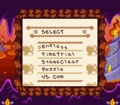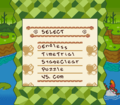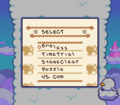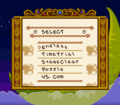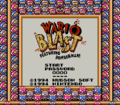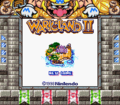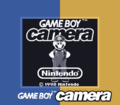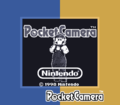Super Game Boy: Difference between revisions
No edit summary |
(This probably doesn't need to be outright specified.) Tags: Mobile edit Advanced mobile edit |
||
| (6 intermediate revisions by 2 users not shown) | |||
| Line 1: | Line 1: | ||
{{system infobox | {{system infobox | ||
|image=[[File:NASuperGameBoy.jpg| | |image=[[File:NASuperGameBoy.jpg|200px]]<br>Super Game Boy<br>[[File:JPSuperGameBoy2.jpg|200px]]<br>Super Game Boy 2 | ||
|generation=Fourth | |generation=Fourth | ||
|release={{release|Japan|June 14, 1994|USA|1994|Europe|1994|Japan|January 30, 1998 (SGB2)}} | |release={{release|Japan|June 14, 1994|USA|1994|Europe|1994|Japan|January 30, 1998 (SGB2)}} | ||
|discontinued= | |discontinued=Unknown | ||
|successor=[[Game Boy Player]] | |successor=[[Game Boy Player]] | ||
}} | }} | ||
The '''{{wp|Super Game Boy}}''' is a special adapter cartridge designed for use with the [[Super Nintendo Entertainment System]] that was released in 1994. It allows players to play [[Game Boy]] games on their television screen through their Super Nintendo. It can also play certain [[Game Boy Color]] games, but only ones that are compatible with the original Game Boy. | The '''{{wp|Super Game Boy}}''' is a special adapter cartridge designed for use with the [[Super Nintendo Entertainment System]] that was released in 1994. It allows players to play [[Game Boy]] games on their television screen through their Super Nintendo. It can also play certain [[Game Boy Color]] games, but only ones that are compatible with the original Game Boy. As the dimensions of the Game Boy's screen are different from those of most televisions, a border is needed on the screen. Certain games, mostly ones that came out around or after the time the Super Game Boy was released, such as ''[[Donkey Kong (Game Boy)|Donkey Kong]]'', take advantage of the Super Game Boy, and display customized borders when played. Many games also allow for enhanced sound effects and music when played on the Super Game Boy. Certain games, such as ''[[Wario Blast: Featuring Bomberman!]]'', take additional advantage of the Super Game Boy, and allow for multi-player with a second controller. It can even take advantage of [[Hudson Soft]]'s [[Super Nintendo Entertainment System#Super Multitap|Super Multitap]] but without support for any fifth player. | ||
When the player presses the {{button|snes|L}} and {{button|snes|R}} buttons on the controller, the Super Game Boy menu can be brought up, allowing the player to alter the border or the controller's button mapping. The player can also assign a [[#Color palettes|color palette]] to the game. | |||
If the player were to leave a game on the Super Game Boy sitting for a few minutes, screensaver-like animation would come from the screen border. Notably, [[Mario]], [[Princess Peach]], and [[Luigi]] appear in one of these border animations. Mario comes spinning up from the lowest window and stands on top of it; if the player waits long enough, Mario falls asleep. While he is asleep, Peach appears from the window on the right. Mario wakes up but misses Peach, instead to have a racecar drive out and spin him around. After this, Mario falls asleep again. Eventually, a spaceship that looks almost identical to the ones in the background of the [[Muda Kingdom]] of ''[[Super Mario Land]]'', only much smaller, circles Mario. He wakes up and then eventually falls asleep again. The animation ends with Luigi coming down on a rope from the top window and pulling Mario back up with him. | |||
The Super Game Boy has a later revision model, the '''[[nwiki:Super Game Boy 2|Super Game Boy 2]]''', which released exclusively in Japan on January 30, 1998. It has a few enhancements, including additional border options and [[nwiki:Game Link Cable|Game Link Cable]] support. | |||
The Super Game Boy eventually received a proper successor, the [[Game Boy Player]] for the [[Nintendo GameCube]], which also includes support for [[Game Boy Color]] and [[Game Boy Advance]] games. | |||
==Compatibility== | ==Compatibility== | ||
| Line 53: | Line 49: | ||
==Color palettes== | ==Color palettes== | ||
The main feature of the Super Game Boy is to give the games color. While SGB Enhanced games come with their own special colors, players can assign their own colors in most games by accessing either the Color Palette Window or the Custom Color Window. The Color Palette Window allows the player choose one of 32 different system color palettes, while the Custom Color Window lets the player adjust the color palette available. A password system at the top of the Custom Color Window saves the changes to the color palette. Pressing {{button|snes|X}} during gameplay will switch between the game's default color palette and any other color palette the player has selected or created. | The main feature of the Super Game Boy is to give the games color. While SGB Enhanced games come with their own special colors, players can assign their own colors in most games by accessing either the Color Palette Window or the Custom Color Window. The Color Palette Window allows the player choose one of 32 different system color palettes, while the Custom Color Window lets the player adjust the color palette available. A password system at the top of the Custom Color Window saves the changes to the color palette. Pressing {{button|snes|X}} during gameplay will switch between the game's default color palette and any other color palette the player has selected or created. Some of the Super Game Boy-enhanced games, including the extended ''[[Super Mario (franchise)|Super Mario]]'' games ''[[Donkey Kong Land 2]]'', ''[[Donkey Kong Land III]]'', and ''[[Wario Land II]]'', do not let the player modify the colors through either the Color Palette Window or the Custom Color Window. | ||
In the case of ''Donkey Kong Land 2'' and ''Donkey Kong Land III'', if the player could override the colors, many of the system color palettes that appear normal in other games show up as inverted in these two games; this happens because both games invert the palettes to work around the Super Game Boy's palette limitations, and assign the colors in a way to hide the inversion. This is similar to a [[Donkey Kong Land#Super Game Boy Title Screen Palette Bug|glitch]] that occurs in ''Donkey Kong Land''{{'}}s title screen -- this game does not block the player from changing the colors. In addition, in ''Donkey Kong Land 2'', if the user could change the colors, part of the border ends up having palette glitches in the black parts of the bananas. | In the case of ''Donkey Kong Land 2'' and ''Donkey Kong Land III'', if the player could override the colors, many of the system color palettes that appear normal in other games show up as inverted in these two games; this happens because both games invert the palettes to work around the Super Game Boy's palette limitations, and assign the colors in a way to hide the inversion. This is similar to a [[Donkey Kong Land#Super Game Boy Title Screen Palette Bug|glitch]] that occurs in ''Donkey Kong Land''{{'}}s title screen -- this game does not block the player from changing the colors. In addition, in ''Donkey Kong Land 2'', if the user could change the colors, part of the border ends up having palette glitches in the black parts of the bananas. | ||
The following images showcase all 32 of the Super Game Boy's stored color palettes from the Color Palette Window on the ''[[Super Mario Land]]'' title screen, as well as the accompanying passwords as displayed in the Custom Color Window. | |||
The following images showcase all 32 of the Super Game Boy's stored color palettes from the Color Palette Window, as well as the accompanying passwords as displayed in the Custom Color Window | |||
<gallery> | <gallery> | ||
SML Super Game Boy Color Palette 1-A.png|Color Palette 1-A<br><small>7047-0470-4704</small> | SML Super Game Boy Color Palette 1-A.png|Color Palette 1-A<br><small>7047-0470-4704</small> | ||
| Line 117: | Line 109: | ||
NASuperGameBoy.jpg|North American Super Game Boy | NASuperGameBoy.jpg|North American Super Game Boy | ||
JPSuperGameBoy.jpg|Japanese/European Super Game Boy | JPSuperGameBoy.jpg|Japanese/European Super Game Boy | ||
Super Game Boy Player's Guide.jpg|[[Nintendo Player's Guide]] | Super Game Boy Player's Guide.jpg|[[Nintendo Player's Guide]] | ||
SGB Boot Screen.gif|Boot screen | SGB Boot Screen.gif|Boot screen | ||
Revision as of 16:38, January 22, 2024
| Super Game Boy | |
|---|---|
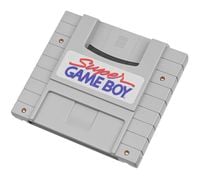 Super Game Boy 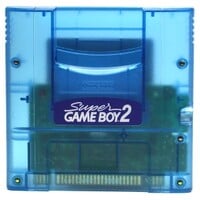 Super Game Boy 2 | |
| Generation | Fourth generation |
| Release date | |
| Discontinued | Unknown |
| Successor | Game Boy Player |
The Super Game Boy is a special adapter cartridge designed for use with the Super Nintendo Entertainment System that was released in 1994. It allows players to play Game Boy games on their television screen through their Super Nintendo. It can also play certain Game Boy Color games, but only ones that are compatible with the original Game Boy. As the dimensions of the Game Boy's screen are different from those of most televisions, a border is needed on the screen. Certain games, mostly ones that came out around or after the time the Super Game Boy was released, such as Donkey Kong, take advantage of the Super Game Boy, and display customized borders when played. Many games also allow for enhanced sound effects and music when played on the Super Game Boy. Certain games, such as Wario Blast: Featuring Bomberman!, take additional advantage of the Super Game Boy, and allow for multi-player with a second controller. It can even take advantage of Hudson Soft's Super Multitap but without support for any fifth player.
When the player presses the and
buttons on the controller, the Super Game Boy menu can be brought up, allowing the player to alter the border or the controller's button mapping. The player can also assign a color palette to the game.
If the player were to leave a game on the Super Game Boy sitting for a few minutes, screensaver-like animation would come from the screen border. Notably, Mario, Princess Peach, and Luigi appear in one of these border animations. Mario comes spinning up from the lowest window and stands on top of it; if the player waits long enough, Mario falls asleep. While he is asleep, Peach appears from the window on the right. Mario wakes up but misses Peach, instead to have a racecar drive out and spin him around. After this, Mario falls asleep again. Eventually, a spaceship that looks almost identical to the ones in the background of the Muda Kingdom of Super Mario Land, only much smaller, circles Mario. He wakes up and then eventually falls asleep again. The animation ends with Luigi coming down on a rope from the top window and pulling Mario back up with him.
The Super Game Boy has a later revision model, the Super Game Boy 2, which released exclusively in Japan on January 30, 1998. It has a few enhancements, including additional border options and Game Link Cable support.
The Super Game Boy eventually received a proper successor, the Game Boy Player for the Nintendo GameCube, which also includes support for Game Boy Color and Game Boy Advance games.
Compatibility
Here's a compatibility chart. Any game only for Game Boy Color will boot but refuse to play further, just like the Game Boy.
| Example Cartridge | Usual Color | Game Boy mode | Super Game Boy mode | Compatible | |
|---|---|---|---|---|---|
| Original Game Boy cartridge | 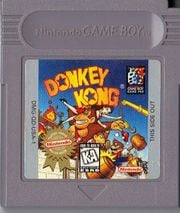
|
Grey | See below | ||
| Game Boy Color cartridge (Black) | 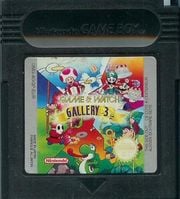
|
Black | See below | ||
| Game Boy Color cartridge (Clear) | 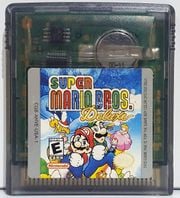
|
Clear |
Color palettes
The main feature of the Super Game Boy is to give the games color. While SGB Enhanced games come with their own special colors, players can assign their own colors in most games by accessing either the Color Palette Window or the Custom Color Window. The Color Palette Window allows the player choose one of 32 different system color palettes, while the Custom Color Window lets the player adjust the color palette available. A password system at the top of the Custom Color Window saves the changes to the color palette. Pressing during gameplay will switch between the game's default color palette and any other color palette the player has selected or created. Some of the Super Game Boy-enhanced games, including the extended Super Mario games Donkey Kong Land 2, Donkey Kong Land III, and Wario Land II, do not let the player modify the colors through either the Color Palette Window or the Custom Color Window.
In the case of Donkey Kong Land 2 and Donkey Kong Land III, if the player could override the colors, many of the system color palettes that appear normal in other games show up as inverted in these two games; this happens because both games invert the palettes to work around the Super Game Boy's palette limitations, and assign the colors in a way to hide the inversion. This is similar to a glitch that occurs in Donkey Kong Land's title screen -- this game does not block the player from changing the colors. In addition, in Donkey Kong Land 2, if the user could change the colors, part of the border ends up having palette glitches in the black parts of the bananas.
The following images showcase all 32 of the Super Game Boy's stored color palettes from the Color Palette Window on the Super Mario Land title screen, as well as the accompanying passwords as displayed in the Custom Color Window.
Nintendo-published games released prior to the Super Game Boy would automatically load one of the above palettes as opposed to the default 1-A palette. Below is a gallery of each game this applies to.
Gallery
Super Game Boy enhanced games
Special borders
It has been requested that more images be uploaded for this section. Remove this notice only after the additional image(s) have been added. Reason: Match the above supported games. Some games may have more than one
Game & Watch Gallery (Fire)
Game & Watch Gallery (Manhole)
Game & Watch Gallery (Octopus)
Game & Watch Gallery (Oil Panic)
Game & Watch Gallery 2 (Modern Parachute)
Game & Watch Gallery 2 (Modern Helmet)
Game & Watch Gallery 2 (Modern Donkey Kong)
Game & Watch Gallery 2 (Modern Ball)
Game & Watch Gallery 2 (Classic Chef)
Game & Watch Gallery 2 (Classic Vermin)
Game & Watch Gallery 3 (Egg)
Game & Watch Gallery 3 (Greenhouse)
Game & Watch Gallery 3 (Turtle Bridge)
Game & Watch Gallery 3 (Mario Bros.)
Game & Watch Gallery 3 (Donkey Kong Jr.)
Game & Watch Gallery 3 (Flagman)
Game & Watch Gallery 3 (Judge)
Game & Watch Gallery 3 (Lion)
Game & Watch Gallery 3 (Spitball Sparky)
Game & Watch Gallery 3 (Donkey Kong II)
Tetris Attack (hidden)
